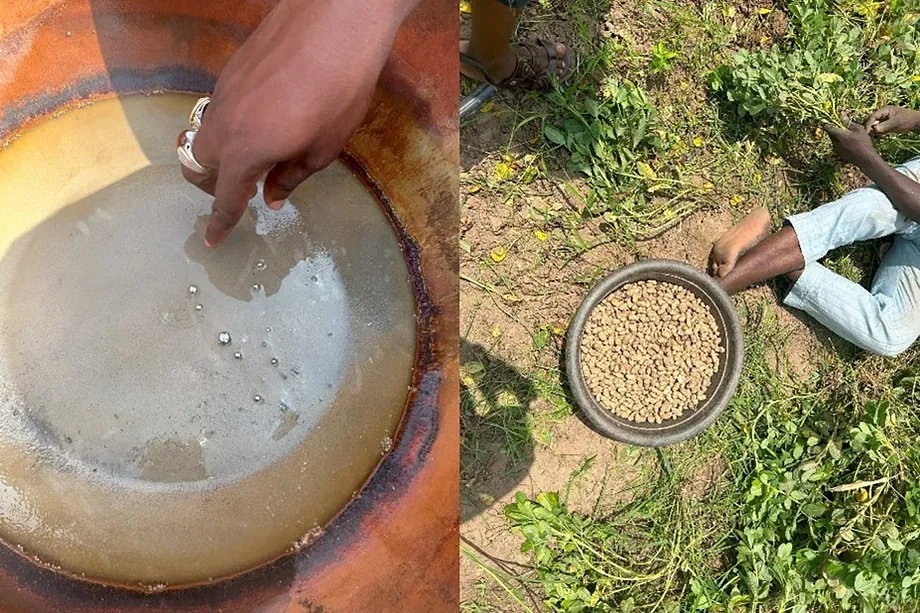Mercury pollution from gold mining is contaminating food crops. It was previously believed to enter through the soil, with leaks reaching through the roots, but it turns out that plants are absorbing mercury directly from the air.
Artisanal gold mining is estimated to release about 800 tons of mercury per year, nearly 40% of global emissions. Mercury evaporates into the air during amalgam burning, used to separate gold from mercury, and then falls as rain or dust, contaminating rivers, fish, and entire communities. The resulting methylmercury accumulates in the food chain and can cause neurological damage, fetal development issues, and immune system impairments.
Artisanal and Small-Scale Gold Mining (ASGM) is currently the largest source of mercury emissions globally, according to the United Nations Environment Programme. It represents about 20% of global gold production while regulation and monitoring are limited in many parts of the Global South, where ASGM is often the economic livelihood of the poorest communities.
The rise in the price of gold, which has multiplied by more than ten since 2000, has led to a surge in unregulated artisanal mining in many regions of the world, such as the farmers extracting gold from the Amazon rivers, raising urgent questions about food security, human health, and environmental justice. A recent study published in the Biogeosciences journal of the European Geosciences Union (EGU) highlights a critical yet overlooked consequence of this boom: food systems are being silently and invisibly contaminated.
The study conducted by an international team of scientists led by Excellent O. Eboigbe and David McLagan from the Environmental Studies department at Queens University, and Abiodun Odukoya Mary, a geochemist from the University of Lagos, focused on an agricultural community in Nigeria near an artisanal gold mine to understand its effects. The researchers compared crops from a field located 500 meters from the gold mine with those grown eight kilometers away. The contrast was striking: mercury concentrations in leaves and grains were approximately between 10 and 50 times higher in the farm closest to the mine.
For decades, scientists had assumed that mercury entered food crops mainly through the roots, filtering through the soil and water. But this new research, using sophisticated stable mercury isotope analysis, reveals a very different mechanism. Most of the mercury in plant tissues comes from the atmosphere, absorbed by leaves during photosynthesis.
"In short: plants are inhaling mercury," notes Environmental Studies professor David McLagan. "Mercury absorption from the air by plants represents the largest sink of mercury from the air into terrestrial systems. While it helps reduce the amount of mercury redistributed globally through the atmosphere, it also raises serious concerns for human health when it comes to staple crops."
The research team found that leafy parts of plants, which are typically consumed by humans and livestock, retained the highest concentrations of mercury. Edible parts without leaves, such as cassava roots or maize grains, had lower but still significant concentrations.
Although levels remained below international mercury consumption thresholds, the authors warn that consuming contaminated crops could still pose health problems, as international standards use very conservative consumption rates.
Mercury is a potent neurotoxin used to extract gold from raw ore. Prolonged exposure, even at low levels, can damage the nervous system, impair child cognitive development, and cause severe cardiovascular and reproductive issues. Due to its frequent use in artisanal and small-scale mining, vulnerable populations in low-income rural areas are at higher risk.
"Miners will not stop using mercury for extraction unless they find an easily available and profitable alternative," stated geochemistry professor at the University of Lagos, Odukoya Abiodun Mary.
The research calls on governments and international organizations to enforce the Minamata Convention on Mercury. Current monitoring strategies mainly focus on water, sediments, and shellfish, but not on crops. This study shows that a key exposure route is being overlooked.
Due to the toxicity of bioaccumulation and the potential for methylmercury biomagnification, fish consumption in ASGM areas has been a major focus of epidemiological research. However, this work demonstrates that there are other dietary sources of mercury.
The study concludes that new policies are urgently needed to monitor and mitigate exposure in agricultural regions near mining activities. Considering the rapid growth of artisanal and small-scale gold mining, millions of people in Africa, South America, and Asia could be facing serious long-term health risks from something as simple and essential as cultivating and consuming local products.
